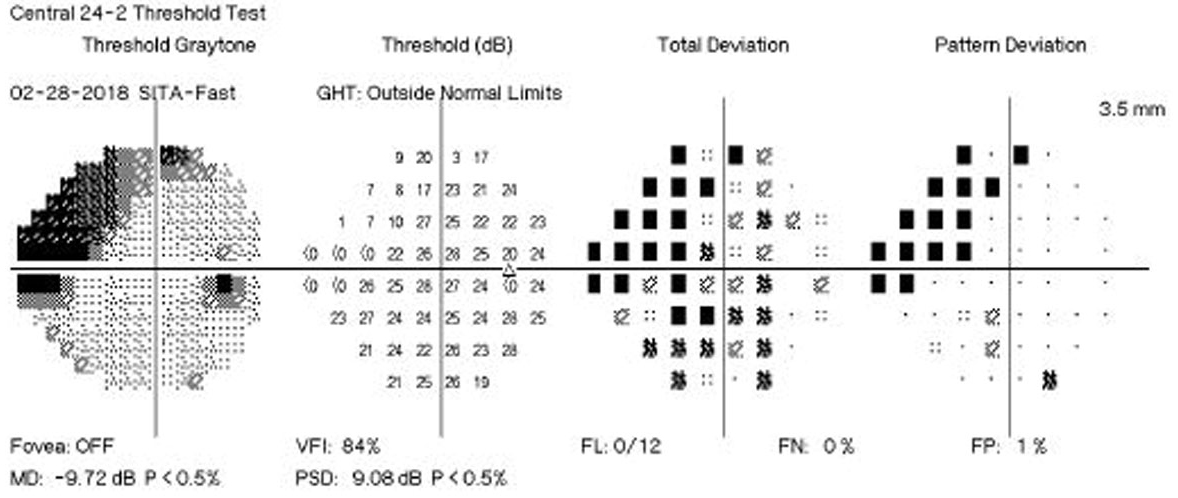 |
| This study found a need in the United States for more frequent, consistent VF testing for glaucoma patients. Photo: Brian D. Fisher, OD. Click image to enlarge. |
It’s not currently known how frequently patients with open-angle glaucoma (OAG) across the United States receive visual field (VF) testing, but most experts recommend at least once per year and go up from there based on severity and risk factors. If VFs aren’t tested frequently enough, interventions to increase this frequency or to develop other forms of visual function testing may reduce unidentified OAG vision loss. A recent large study determined that more than 77% of its participants with OAG did not receive annual VF testing and thus did not receive guideline-adherent glaucoma monitoring.
The study population consisted of 380,029 individuals with a recorded diagnosis of OAG who were older than 40. The median age was 67, and 54.6% were female. The researchers divided the cohort based on the number of VF tests they underwent per year. Results are as follows:
VF Sessions Per Year | Percent of Sample |
0 | 8.8% |
0 to 0.9 | 68.2% |
0.9 to 1.1 | 11.1% |
1.1 to 2.1 | 11.1% |
>2.1 | 0.8% |
The median number of VF tests per year was 0.63, and the mean was 0.65 per year.
Older age, female sex and a diagnosis of diabetic retinopathy were associated with receiving VF tests less frequently. Using more glaucoma medications (≥3 medication classes compared with no medication classes), living in an urban rather than rural setting, receiving incisional glaucoma surgery and having a diagnosis of macular degeneration were associated with receiving VF tests more frequently. Patients who received three or more glaucoma medication types underwent 39.7% more VF tests per year than those who did not receive any glaucoma medication. Patients who received incisional glaucoma surgery underwent 19.4% more VF tests per year than those who did not receive incisional glaucoma surgery.
After adjusting for the number of glaucoma medication types and incisional surgery, the researchers found that participants who saw only an ophthalmologist in a given year underwent 24.3% more VF tests in that year than those who saw only an optometrist. The researchers suggested optometrists and ophthalmologists coordinate care to ensure that patients are receiving VF testing frequently enough for timely identification of glaucoma progression.
“Clinicians caring for patients with glaucoma should evaluate their personal practice patterns and recognize that there is a nationwide bias toward insufficient testing,” the study authors wrote in their paper. “Difficulties with insurance reimbursement for VFs, patient preference and provider convenience may contribute to this.”
Stagg BC, Stein JD, Medeiros FA, et al. The frequency of visual field testing in a US nationwide cohort of individuals with open angle glaucoma. Ophthalmology. May 20, 2022. [Epub ahead of print]. |

